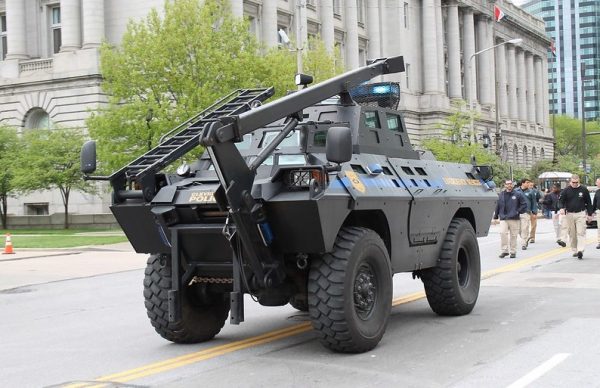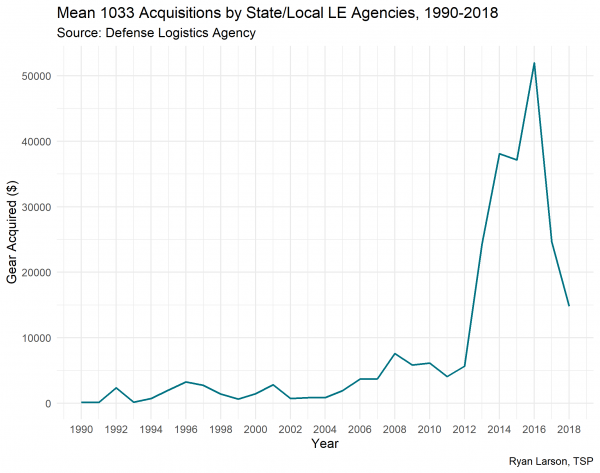
Modern policing is often characterized by its quasi-militaristic tendencies, from its stated “wars” on drugs and crime to its use of armored vehicles and automatic weapons. The Department of Defense 1033 Program, which provides military equipment slated for storage to law enforcement agencies, is a popular route by which police and sheriff’s departments acquire military gear. According to data from the Defense Logistics Agency, the acquisitions of military equipment by state and local law enforcement sharply rose to a peak in 2016, but has declined in recent years. But what explains who participates in the DOD’s program and who acquires the most military equipment?

David Rameyand Trent Steidley investigate the factors that pattern whether law enforcement agencies participate in the program and how much gear they acquire using 1033 program participation and U.S. Census and American Community Survey data. They find that participation in the 1033 — but not the value of gear acquired — is greater in areas of higher violent arrests. They also find that, after controlling for crime rates and other factors, higher Black and Hispanic populations correlate to higher levels of participation and greater value acquired.
However, these racial impacts work in a nonlinear fashion. Agencies operating in areas very low and very high in minority presence have low probabilities of program participation, but agencies that serve a more diverse community are most likely to obtain military equipment through the 1033 program. For those that do participate, increases in minority populations raised the value of gear agencies used, with each subsequent increase garnering even more gear than the last (an exponential increase). In other words, program participation increases in response to racial demographics up to an extent, but once an agency decides to participate, the value of military equipment requested dramatically increases as minority populations increase.Police militarization appears to support two key theories. From a classic rational choice perspective, law enforcement agencies respond to increasing crime rates with police militarization, possibly in an attempt to increase the agency’s ability to deter further crime. In contrast, the racial effects found in this study follow a “minority threat” model, as military acquisitions are patterned by perceptions of racial competition in the presence of racial minority groups. This research illustrates how race, net of the crime rates in an area, can pattern not only where police operate, but how police operate.
